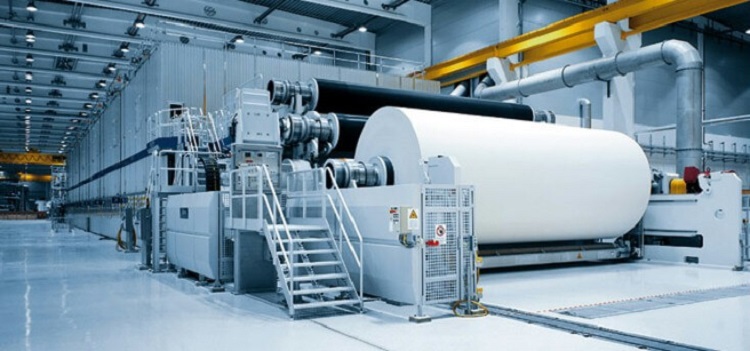This article delves deep into the world of slip rings, essential components that form the backbone of rotational electrical connectivity in countless modern machinery and devices. Starting with a straightforward introduction to what slip rings are, the article unfolds the rich history and evolution of these pivotal components, tracing their journey from basic designs to sophisticated modern versions. Through a detailed exploration, the article sheds light on various types of slip rings—such as capsule, mercury-wetted, and pancake—and their unique applications, offering insights into why certain types are chosen for specific tasks.
A closer look at the technical workings, complete with illustrative diagrams, explains how slip rings operate to seamlessly transfer power and data. The discussion extends into materials and manufacturing processes, revealing how and why slip rings are made. For those contemplating the integration of slip rings into their systems, a guide on key features, specifications, and selection tips is provided, supported by advice on addressing common concerns, maintenance, and troubleshooting.
Highlighting innovations in slip ring technology and imagining future trends, the article not only reflects on contemporary advancements but also speculates on how emerging technologies like wireless power transmission might shape the future of slip rings. Engaging case studies demonstrate the versatility and indispensable role of slip rings in various industries, from wind turbines and robotics to medical equipment. In conclusion, the article reiterates the crucial role slip rings will continue to play in supporting and advancing modern technology and machinery, ensuring their seamless and efficient operation.
What is Slip Rings
Slip rings, often referred to as rotary electrical interfaces, rotating electrical connectors, or electrical rotary joints, serve as a bridge to transfer power and electrical signals from a stationary part of a machine to a rotating one. Imagine the complexity of a merry-go-round; as it spins, the lights and music that enhance the joyous experience are powered through an analogous system – that’s the essence of what slip rings do in industrial applications. They allow for the transfer of current and data, ensuring continuous operation without hindering the rotation.
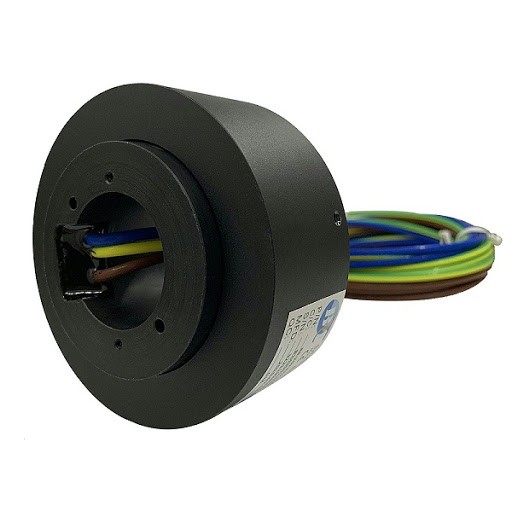
The principle might sound simple, but the applications of slip rings span from the every day to the extraordinary. They are paramount in a multitude of sectors including aerospace, defense, robotics, wind turbines, and even medical equipment such as CT scanners. Each of these applications relies on slip rings to perform essential functions that could not be achieved through other means due to the need for continuous rotation and power/data transmission.
In aerospace, slip rings are used in helicopters; they transfer signals and power between the stationary part of the aircraft and its rotating blades. Imagine the complexity and critical nature of these components, which must work flawlessly to ensure the safety and efficiency of the aircraft. In the renewable energy sector, wind turbines utilize slip rings to transmit power and data from the nacelle to the stationary tower, allowing the blades to rotate freely according to wind direction while still generating electricity.
The importance of slip rings in these applications cannot be overstated. They are not only pivotal in the operation of rotating machines but also contribute significantly to the advancement and reliability of many modern technologies. Without slip rings, the dynamic world of moving electrical systems would be far more limited, less efficient, and in some cases, impossible to operate as we know them today.
The History and Evolution of Slip Rings
The origins of slip rings can be traced back to the early 20th century. Their earliest known use was in 1890, in a patent filed by Frank Julian Sprague, an accomplished inventor who was a pioneer in the electrification of the U.S. His patent for an “Electrical Machine” mentioned the use of slip rings for electric motors. It was a slightly primitive design, but the essence of modern slip rings was evident in this invention.
Over the following decades, the changes in slip ring technology mirrored the advances of a broader spectrum of electronics and engineering. Early slip rings were primarily metal-based designs, encompassing copper or gold alloyed contacts and graphite or metal brushes. While effective, these initial designs had issues such as wear, noise, and sometimes even a damaging effect on the rotating devices.
As technological advancements soared in the mid-20th century, slip ring applications expanded beyond their centralized use in generators and motors. With the advent of space exploration, slip rings became crucial components in satellites and spacecraft. Here, they served to transfer power and data in systems that demanded rotation, operating in the incredibly harsh conditions of space.
Later, the fields of robotics and medical imaging began to utilize slip rings. In robotics, slip rings are found in robotic arms, allowing them to rotate freely while maintaining uninterrupted power and signal transfer. In medical imaging machines like CT scanners, slip rings transfer power and signal between the stationary and rotating parts, thereby enabling this life-saving technology.
The development of slip rings over the years is interesting because improvements have happened in both the product itself and the materials used. Technological innovations led to the creation of different types of slip rings such as capsule slip rings, mercury-wetted slip rings, and pancake slip rings, tailored to accommodate the specific needs of various sectors. In terms of materials, we’ve seen the progression from metal and graphite-based designs to more flexible, durable, and high-performing materials that cater to current demands of size, performance, and long service life.
Today, the burgeoning era of digitalization and IoT presents unique challenges and opportunities to slip ring technology. Handling high-frequency signals, data transfer rates, and the growing demand for smaller, more efficient designs are at the forefront of modern-day slip ring innovation. As we move forward, it will be exciting to see how slip rings continue to evolve, responding to the new demands placed on them in an increasingly digital world.
Continuing our expedition into the world of slip rings, our next section will take a closer look at the different types of slip rings, their characteristics, and the diverse applications they empower.
Types of Slip Rings and Their Applications
Slip rings come in a plethora of designs, each tailored for specific applications based on certain constraints such as size, speed, operating environment, and the type of data transferred. Let’s explore some of the most common types of slip rings and their typical applications.
Capsule Slip Rings: Capsule slip rings, also known as Miniature Slip Rings, are small in size and light in weight. Their compact design allows for the smooth transmission of electricity and electrical signals in devices where installation space is limited. Common applications include CCTV security cameras, wherein the slip ring enables the camera to rotate continuously while transmitting video signals; and medical equipment such as endoscopes, where the slip ring enables the transfer of signals from the rotating end of the device to the stationary display unit.
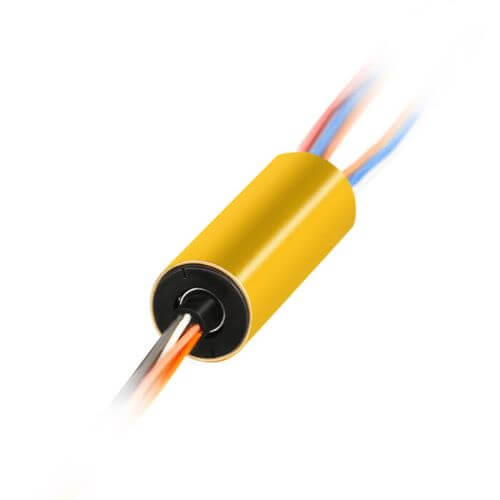
Mercury-Wetted Slip Rings: These are a type of slip ring that uses mercury as the conducting medium, which results in nearly negligible contact resistance and hence, a very stable electrical connection. They excel in applications needing low noise and where high-speed data transfer is necessary. Mercury-wetted slip rings are often found in high-speed data acquisition systems, precision instrument applications, and in the materials and chemicals industries. However, due to mercury’s toxicity, these slip rings are generally only used when no other slip ring can meet the requirements.
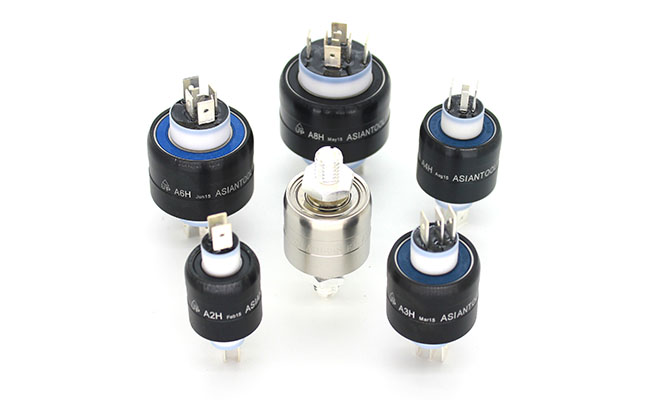
Pancake slip rings: Pancake slip rings have conductive rings arranged in a disc-like form, hence the name. Their flat design makes them suitable for use in space-constrained applications where height is a critical factor. Though their performance in transmitting higher data rate signals might not be as good as some other forms, they’re still widely used in packaging industry machines, cable reels, and certain marine and offshore equipment.

Through-Bore Slip Rings: These slip rings include a central hole to fit around shafts or accommodate other cables or pneumatic lines, making them a versatile solution for many rotating systems. They’re typically used where signals and power need to be transferred between the rotating and stationary sections of a machine around an axis. Their application spans aerial drones, wind turbines, automotive production lines, and radar systems.
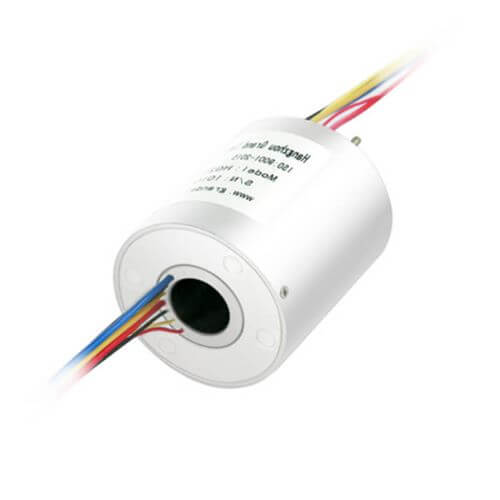
Fiber Optic Rotary Joints (FORJ): As data transmission requirements grow, so does the need for slip rings capable of handling high data rate signals. Fiber optic rotary joints, though technically not classified as a slip ring, perform a similar function, especially in transmitting large amounts of data and electronic signals. They’re commonly used in data transfer devices, broadcasting equipment, and certain types of high-performance cameras.
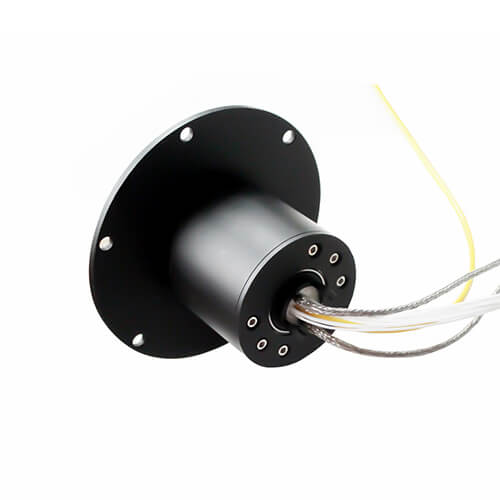
Radio Frequency (RF) Rotary Joints: Another high-bandwidth solution, RF rotary joints are used to transmit radio frequency signals across rotating interfaces. They’re particularly useful in satellite communication systems, radar systems, antenna mounts, and other applications in which both rotation and signal transmission are required.
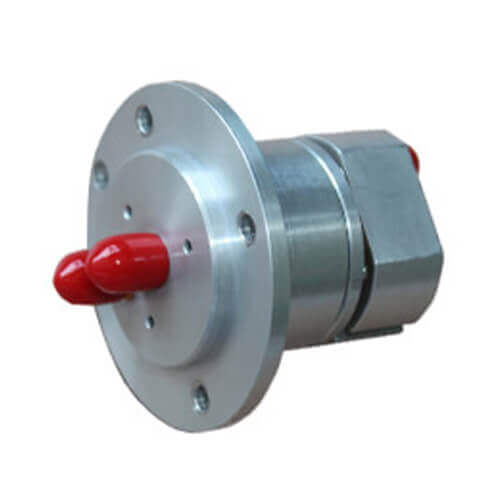
The world of slip rings is indeed wide-ranging and diverse. The size, design, and functionality are all dictated by the needs of the machinery or equipment they are purposed for. Regardless of their type, all slip rings play a pivotal role in ensuring the seamless operation of numerous devices we use daily. Understanding their types, functionalities, and usage helps deepen our understanding not just about them but also about the intricacies of the devices they power.
In the next section, let’s learn about the technical operation of these intriguing devices and how they function within a system to make power and signal transmission possible during rotation.
How Slip Rings Work: A Technical Perspective
At their most basic, slip rings consist of two main parts: the rotating part (rotor), typically connected to a rotating assembly, and the stationary part, also known as the stator. It is the interaction dynamic between these two key components that enables electrical current and signal transference during rotation.
Rotating part (Rotor): The rotor consists of conductive rings, each of which has an electrical connection associated with it—these could be power lines or signal lines. The rings are mounted on a rotating assembly, for example, the shaft of a machine, hence the rotating part.
Stationary part (Stator): The stator, conversely, maintains physical contact with the rotor with the help of brushes. These brushes — which can be made from precious metals, graphite, or other materials based on the specific application — are in constant contact with the conductive rings on the rotor, effectively forming a closed loop to transfer electrical current and signals.
Understanding the Process
- Power or Signal Entry: Electrical power or signals enter through the stator end and are transmitted through the brushes pressing against the rotary contacts or rings. Each brush and ring pair operates independently of the others, facilitating simultaneous multiple-contact use in complex systems.
- Energy Transfer: As the rotor spins, the electrical energy or signals are seamlessly conducted from the stationary brushes through the rotating conductive rings. Because the brushes maintain constant contact with the rings, the electrical connection is maintained throughout the rotation, resulting in an uninterrupted flow of power or signals.
- Power or Signal Exit: The electrical signals or power, having now been transferred to the rotating part of the machine via the rotating conductive rings, continue on their path to power motors, transmit data, etc.
Given the textual medium, it is challenging to present diagrams or animations here to illustrate the mechanism. Nevertheless, the fundamental idea is to picture a mechanical interface where a stationary set of brushes connected to an electrical source/signal gently touches a rotating ring. This interaction enables the current or signal to “jump” from the stationary part to the rotating part, allowing continuous operation of the system.
Regardless of the type of slip ring or the specific application, the principle remains the same: power and signals need to be transferred from a stationary device to a rotating one. Slip ring technology, thereby, makes possible many of the devices and machinery we rely on daily, from everyday home appliances to advanced medical imaging machines.
Next, let’s look at some of the common problems encountered in slip ring applications and discuss how innovation in slip ring design has worked to mitigate these issues.
Materials and Manufacturing of Slip Rings
Materials and the manufacturing process of slip rings are fundamental factors in determining their functionality, durability, and effectiveness. Understanding the composition and production of these essential components can provide a greater appreciation for their role in facilitating a functioning rotating system.
Materials in Slip Rings
The materials used in producing slip rings primarily involve conductive metals and alloys for ring and brush contacts, and insulating materials for housing and separating the tracks.
Ring and Brush Contacts: The main materials used for ring and brush contacts are varying types of metal alloys. Copper, silver, and gold are the most commonly adopted because of their excellent conductivity. Certain applications might require the use of precious metal alloys for improved signal integrity, low noise levels, and resistance to corrosion, especially in critical sectors like aerospace and medical equipment.
Insulating Materials: Apart from these, insulating materials like plastics (examples include PEEK, and PTFE) or engineered thermoplastics are used for housing and separating the tracks. They are chosen for their strength, durability, and resistance to a wide range of operating temperatures, ensuring the overall slip ring assembly is robust and lasts for the required lifetime.
It’s essential to note that the specific materials used can vary depending on the custom requirements of the rotating system in which the slip ring will be installed.
Manufacturing Process of Slip Rings
The manufacturing process of slip rings involves precise engineering and meticulous assembly to ensure the integrity of electrical contacts while allowing for smooth rotation.
- Materials Preparation: The initial phase involves readying the parts required for the assembly. This includes preparing the conductive metal rings and brushes, along with the insulating items such as the housing and the separators.
- Assembly of Rings & Brushes: The conductive rings are stacked with the help of insulating materials, ensuring they remain separate. The brushes, often arranged in a brush board or assembly, are mounted such that they align with and gently press against the corresponding conductive rings.
- Assembly Completion: Following the assembly, the entire unit (also known as the rotor) is enclosed in a housing made of insulating material to ensure it is safe from external factors. The housing also serves the function of securing the brushes in place while allowing for the necessary rotation of the rings.
- Testing and Quality Control: Finally, each manufactured slip ring must pass a series of tests to ensure all electrical parameters are up to the mark. This includes checking for insulation resistance, noise levels, contact resistance, and overall operational smoothness.
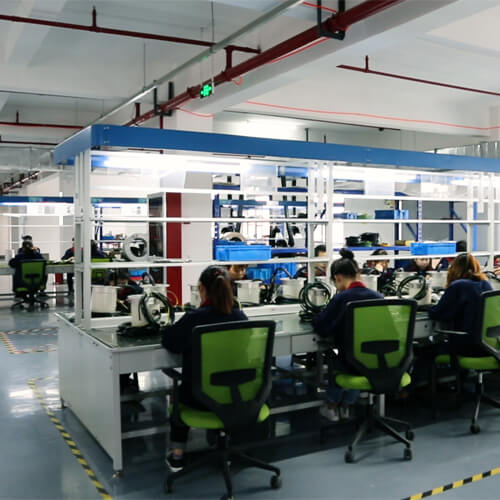
In all, the materials and manufacturing process of a slip ring play pivotal roles in its reliability and performance. The sophistication of current-day slip rings is a testament to the incredible evolution in material science and manufacturing techniques over time.
The next section will explore various advancements in slip ring technology addressing issues such as contact wear, debris, signal integrity and, how innovations continue to push the boundaries of what these versatile devices are capable of.
Key Features and Specifications for Choosing Slip Rings
When it comes to integrating slip rings into any system, understanding the key features and specifications becomes crucial. These components not merely facilitate the transfer of power and signals across rotating interfaces but also significantly impact the performance, durability, and reliability of the operational system. This segment aims to demystify the process of selecting the right slip ring by highlighting the essential attributes and specifications to consider.
What is the Core Features
- Current & Voltage Ratings: The current and voltage ratings of a slip ring indicate the maximum electrical load it can handle. These specs are paramount when selecting a slip ring for high-power applications versus low-power signal transmission. For instance, a slip ring for a wind turbine generator would require a substantially higher current and voltage rating compared to one used in a CCTV camera setup.
- Number of Circuits (Channels): The number of circuits or channels in a slip ring determines how many separate signals or power sources it can transfer simultaneously. The requirement here is dictated by the complexity of the system. An advanced robotic arm, for example, would need multiple channels for power, data, and control signals to operate the motors, sensors, and actuaries effectively.
- Rotational Speed: Also known as the maximum operating speed, this specifies how fast the slip ring can rotate without affecting performance. High-speed applications like centrifuges and testing equipment need slip rings designed to maintain integrity and connectivity at high revolutions per minute (RPM).
- Material and Build Quality: The choice of material for contact points (gold, silver, copper) affects conductivity, noise, and wear. Likewise, the overall build quality will determine the slip ring’s resilience to environmental factors like temperature, humidity, and dust, which is critical in harsh settings such as industrial or outdoor applications.
- Size and Installation Requirements: Physical constraints and installation requirements play a significant role. Compact slip rings with a slim profile are essential in applications with limited space like miniature motors or medical devices. The ease of integration without significant modifications to existing systems is a practical consideration.
Specifications You Need to be Aware of
- Current Rating: Often listed in amperes (A), it represents the maximum current the slip ring can carry.
- Voltage Rating: Listed in volts (V), indicating the maximum voltage capacity.
- Insulation Resistance: A measurement in ohms (Ω), showcasing the effectiveness of the slip ring in preventing electrical leaks between circuits.
- Operating Speed: Specified in RPM, it highlights the optimal and maximum rotational speed.
- Operating Temperature Range: Indicating the minimum and maximum temperatures in which the slip ring can function without performance degradation.
- Life Expectancy: Provided in cycles or hours, it estimates the operational lifespan under normal conditions.
Selection in Practice
When selecting a slip ring for a security camera, for instance, one would prioritize a compact design, moderate speed, and sufficient channels for power and video signal transmission. Conversely, for an industrial automation setup, current and voltage ratings, along with the durability and number of channels, become the focus due to higher power requirements and the need for multiple control and sensor signal transmissions.
Having a comprehensive view of these specifications not only aids in selecting the appropriate slip ring for your application but also mitigates the risks of performance issues or system failures. It encourages a harmonious blend of technical requirements with practical application, ensuring the chosen slip ring seamlessly integrates into the system, enhancing both functionality and reliability.
Common Concerns with Slip Rings: Maintenance and Troubleshooting
Slip rings, like all mechanical components, have their fair share of issues that may adversely affect their performance and longevity. From contact wear and noise to signal distortion, understanding these common difficulties is the first step toward effective troubleshooting and maintenance.
Common Issues with Slip Rings
Contact Wear: A typical concern with slip rings is contact wear, where the repeated friction between the brushes and the rings contributes to physical deterioration over time. This wear can cause an increase in noise and signal interference and, in more severe cases, a total connection loss.
Noise Level: Noise, in the context of slip rings, includes both electrical and mechanical noise. Electrical noise relates to the distortion of the signal being transmitted, while mechanical noise refers to the physical sound produced during operation. Both types can undermine the slip ring’s performance and effectiveness in sensitive applications such as audio/video transmission or precision instrument control.
Signal Distortion: Without proper shielding and grounding, the signals transmitted through the slip ring can experience distortion due to electromagnetic interference (EMI) or radio frequency interference (RFI). The challenge amplifies in environments flooded with electronic devices, introducing unexpected problems in the system’s operation.
Irregular Operations: Due to a lack of maintenance or environmental factors, slip rings can sometimes exhibit irregular operations such as intermittent connection, reduced rotation speed, or unusually high operating temperature.
Guiding Principles for Troubleshooting and Maintenance
Regular Inspections: Performing regular inspections helps spot wear and tear early before they escalate into bigger problems. Checking for visible damages, deposit build-ups, and abnormal noises are good starting points.
Cleaning: Many issues with slip rings are attributed to accumulations of dirt, dust, or other debris, which could hamper contact between brushes and rings. Regular cleaning, in accordance with the manufacturer’s guidelines, mitigates this problem.
Checking Electrical Measurements: Another proactive measure is to periodically check the electrical parameters, including the current, voltage, and resistance. Any abnormal variations in these values might indicate issues like poor contact, excessive wear, or nearing the end of life.
Replacing Worn-out Components: Depending on the specific design, some slip rings offer the possibility of replacing the brushes or even the whole rotor. If the signs of wear and tear are advanced, you might want to consider replacement.
Technician Intervention: If the problem persists despite your best efforts, it’s recommended to get professional help. A technician with in-depth knowledge of slip rings can root out sophisticated problems and provide necessary repairs.
Maintaining performance and ensuring the longevity of your slip ring is achievable with proactive monitoring, systematic troubleshooting, and regular care. While this may seem like a considerable commitment, the reward is the smooth operation of your rotating mechanical systems, general reliability and prolonged life span of the equipment, and ultimately, savings in terms of both downtime and monetary cost. Next, we will look at how innovations and improvements in slip ring technology are paving the way for future advancements.
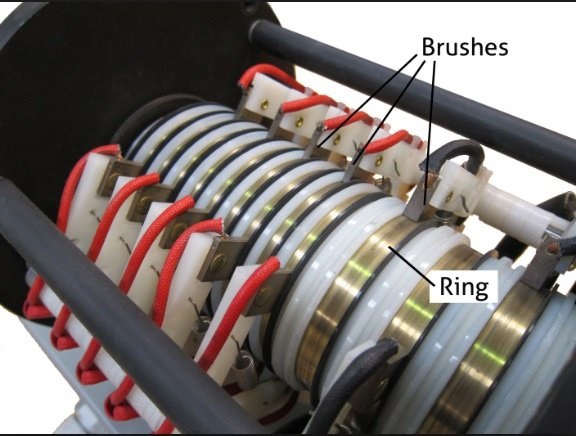
Innovations in Slip Rings Technology
Continued advancements in technology and industries necessitate equally innovative components to meet escalating demands. Slip ring technology, one of the critical parts of many rotary systems, has seen significant evolutions in recent years. Pioneering designs and materials promise to tackle long-standing issues while increasing the versatility and effectiveness of slip rings.
Recent Advancements in Slip Ring Design and Materials
Fiber Optic Slip Rings (FORJ): With data becoming the world’s most valuable asset, the need for slip rings capable of transmitting massive amounts of it with minimal loss is more critical than ever. Fiber Optic Rotary Joints (FORJ), a recent development in slip ring design, employs fiber-optic cables instead of traditional conductive contacts, thereby allowing the transmission of data at high speeds without signal loss, distortion, or noise.
Wireless Slip Rings: In a bid to eliminate wear and tear due to friction completely, wireless slip rings, also known as Inductive Slip rings, have entered the scene. They use electromagnetic fields to transfer energy and signals between the stationary and rotating parts. The result – significantly reduced mechanical wear, leading to increased lifespan and minimized noise.
Improved Contact Materials: Ongoing research and developments in material science have introduced more superior contact materials. Examples include advanced alloys and composite materials, offering superior conductivity, minimal noise, improved durability, and resistance to environmental factors.
Hybrid Slip Rings: As different applications may require varied signal and power transfer, hybrid slip rings combining electrical, fiber-optic, pneumatic, and hydraulic channels in one unit are becoming increasingly common. They provide unparalleled versatility and promote increased integration of functions in compact designs.
Smart Slip Rings: In tandem with the rise of Industry 4.0 and IoT (Internet of Things), smart slip rings with built-in sensors and diagnostic functions are gaining popularity. They provide real-time data on their own operational status, predicting wear, identifying problems early, and notifying maintenance needs, effectively extending their lifespan and reliability.
The Future of Slip Rings
The aforementioned innovations have the potential to redefine the applications of slip rings. FORJs, for instance, could become the backbone of autonomous vehicle technology, enabling the smooth transmission of LIDAR data. Similarly, highly versatile hybrid slip rings might find use in advanced automation and robotic technology, providing an integrated solution for power, signal, and fluid or gas transmission.
Inductive or wireless slip rings could pave the way for even more sophisticated applications in medical and space technology, where minimal interference, increased lifespan, and zero physical wear are particularly critical. Smart slip rings, with their real-time monitoring capacities, promise to significantly reduce maintenance costs and downtime – a boon for industries such as wind power generation and production lines where service interruptions can be costly.
The constant innovation in slip-ring technology resonates with the evolution of the applications they serve. By anticipating and addressing challenges head-on, these innovations promise more reliable, efficient, and versatile slip rings, destined to impact many aspects of our technological future. The continuous advancement assures that no matter how much technology evolves, slip rings will adapt and continue to be the silent workhorse behind every successful rotary system.
Slip Rings in Action: Case Studies
Slip rings are unsung heroes within the intricate world of machinery and technology. By quietly fulfilling their roles, they become an indispensable component in numerous industry sectors. These practical, real-world case studies will highlight how slip rings contribute to functionality and innovation in several critical industries.
Wind Turbines: Harnessing Renewable Energy
Case Study: Slip Rings in Wind Power Generation
Wind turbines are exemplary models of slip rings in action. In these towering structures, slip rings are located in the nacelle (the turbine’s housing unit atop the tower), connecting the stationary and rotating parts. They transmit electrical power and data signals from the generator to the grid while also enabling the wind turbine’s blades to rotate freely to align with the wind direction.
One notable case is the application of slip rings in an offshore wind farm in the North Sea. Here, high-performance slip rings with robust weatherproofing are crucial due to the harsh marine environment. Saltwater can lead to corrosion, increase wear, and even cause electrical failure. However, these specially designed slip rings successfully withstand these conditions and ensure continuous, reliable transfer of power and sensor data, allowing for uninterrupted clean energy generation and real-time wind and performance monitoring.
Robotics: Efficiency and Precision
Case Study: Slip Rings in Industrial Automation
Industrial robots are the powerhouses of manufacturing, and slip rings are integral to their multidimensional movements. Consider an automotive assembly line where robots are performing tasks like welding, part assembly, and painting. Slip rings located in the joints of these robots provide a continuous 360-degree rotation, transmitting control signals and electric power to execute precise and repetitive tasks.
A prominent automotive manufacturer employed high-speed slip rings capable of sustaining fast rotational movements while maintaining high-quality signal transmission to control sensors and actuators. This upgrade minimized downtime and allowed for smoother operation, leading to an enhanced rate of production and better quality control.

Medical Equipment: Revolutionizing Diagnostic Imaging
Case Study: Slip Rings in CT Scanners
CT scanners are revolutionary in providing detailed cross-sectional images of the body for diagnostic purposes. The slip rings in these machines enable the X-ray detector assembly to rotate around the patient, capturing multiple images from various angles without interruption.
A breakthrough in this domain was achieved with the development of high-density slip rings, which support the transfer of a substantial amount of data from the detectors to the computer, without interfering with the delicate signals. This advancement is seen in a metropolitan hospital that used these new-generation slip rings to achieve faster scan times with higher image resolution, leading to quicker diagnosis and more efficient patient throughput.
Through providing power and data transmission in rotating interfaces, slip rings have been enabling innovations and enhancing efficiency across various fields. From wind turbines that contribute to sustainability, to robots that streamline manufacturing processes, and medical equipment that advances patient care, they prove to be invaluable components. These case studies not only shine a light on slip ring applications but serve as a testament to their transformative role in modern technology and industry. As the technology progresses, it remains certain that slip rings will continue to adapt and drive advancements in countless applications.
The Future of Slip Rings: Trends and Predictions
Change is the only constant, and technology is a stage where this phrase holds with utmost certainty. With advancements in various sectors, component parts like slip rings should also evolve to keep pace. Certain industry trends and technological progressions point towards fascinating possibilities for slip rings, altering their design, functionality, and application.
Emerging Trends: Wireless Power and Data Transmission
One of the most significant trends in technology is the wireless transmission of power and data. This progress shapes up to have a profound impact on slip rings.
Wireless Power Transmission: The advent of Inductive Slip Rings or Wireless Slip Rings brings iteration to the world of non-contact power transfer. Employing magnetic coupling, these wireless slip rings eliminate the factors of wear and tear due to physical contact, thereby reducing maintenance and increasing longevity. Anticipating their potential, we can expect enhanced adoption of these wireless power devices across industries advancing in wireless charging, such as electric vehicles and mobile devices.
High-Speed Data Transfer: With Industry 4.0’s digital revolution, data transmission at high speed becomes vital. Traditionally, slip rings suffered from data interference, but modern Fiber Optic Rotary Joints (FORJs) offer an efficient solution. They use optical fibers to transmit large amounts of data at breakneck speed with minimal signal loss. As advanced telecommunications and networking systems become the norm, the incorporation of data-centric slip rings looks set to rise.
Future Adaptations: Smart and Durable Slip Rings
Trends signal that future slip ring technology might focus on making them smarter and more durable.
Smart Slip Rings: Given the rise of predictive maintenance and IoT, slip rings with embedded sensors and self-diagnostic capabilities can become a norm. They will be smarter, able to monitor wear, predict failures, and signal maintenance needs. The advantage is a reduction of disruptive and costly downtimes, especially given that timely maintenance can prolong a slip ring’s lifespan.
Durable and Versatile Slip Rings: Environmental challenges such as temperature fluctuations, corrosive elements, and vibrations necessitate slip rings that can withstand extreme conditions. Advanced materials and robust designs may embody future variants. Moreover, industry demands for high versatility could lead to the increase of hybrid slip rings that can manage different signal types and power levels in a single device.
The future of slip rings promises to echo the sentiments of progression and adaptability. For them to stay relevant, these developments need to be in line with the emerging trends and growing demands within various industries. While predictions of precise alterations or advancements remain a challenging task, the direction pointing towards smarter, wireless, durable, and more versatile slip rings is clear.
This evolution is not just about better slip rings, but about enabling the broader systems they are a part of becoming more efficient and capable. By doing so, slip rings will continue to form a crucial connection in the ever-turning wheels of progress.
The Essential Role of Slip Rings
In the intricate dance of modern technology and machinery, slip rings maintain an almost ethereal presence, often unnoticed yet indispensable. They embody the essence of connection and rotation, providing a seamless link that supports continuous motion and communication within various devices and systems. This concluding section revisits their critical role and projects the importance slip rings will retain as we advance further into a technology-driven future.
The Backbone of Rotation and Transmission
Slip rings exist as the unsung heroes of the technological realm; their application ranges from giant wind turbines challenging the sky to the precision of medical scanners exploring the human body’s mysteries. Within these machines, slip rings facilitate a critical function – the transfer of power and data across rotating interfaces, ensuring that despite motion, performance remains uninterrupted. For instance, the robust slip rings in wind turbines allow for the transmission of electrical energy generated at soaring heights to ground level, contributing to sustainable power solutions. Similarly, the delicate yet durable slip rings in CT scanners enable high-resolution imaging by feeding data from the rotating X-ray detectors to the stationary processing units.
Paving the Way for Technological Advancements
As technology evolves, the demands on slip rings become more complex and varied, pushing innovation in their design and function. The future foresees slip rings not only as components facilitating current needs but as crucial drivers in the development of new technologies and systems. With the advent of wireless power transmission, smart monitoring, and multi-functional capabilities, slip rings are set to leap beyond traditional boundaries.
They are the enablers of innovations in robotics, where complex, multi-axis movement demands the reliable and efficient transmission of power and signals. In space exploration missions, where equipment must withstand the harshest environments, the design innovations in slip rings ensure critical systems remain operational. Additionally, the push towards renewable energy sources sees slip rings at the helm in wind and hydroelectric power systems, ensuring sustainable energy transfer.
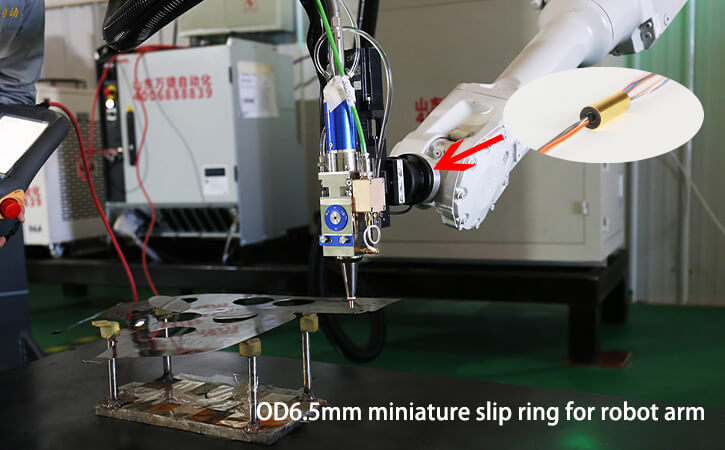
A Future Ensured by Adaptability and Innovation
The role slip rings will play in the unfolding story of technological advancement cannot be understated. As we venture into realms of autonomous vehicles, IoT, and beyond, the adaptability and innovation within slip ring technology will directly influence the feasibility and success of these endeavors. Slip rings will continue to break barriers, offering solutions that accommodate the ever-increasing speed of data transmission, the need for miniaturization, and the demand for systems that are smarter and more energy-efficient.
Emphasizing the Unseen Essential
In recognition of their silent yet impactful service, it becomes imperative to consider slip rings not just as components, but as fundamental enablers of modern technology. Their evolution parallels the technological advancements we witness, mirroring the ingenuity and resilience that drive progress. As we reflect on the essential role of slip rings, it’s clear they are more than mere cogs in the machine; they are keystones in the arch of innovation, holding together the past’s achievements while supporting the future’s possibilities.


